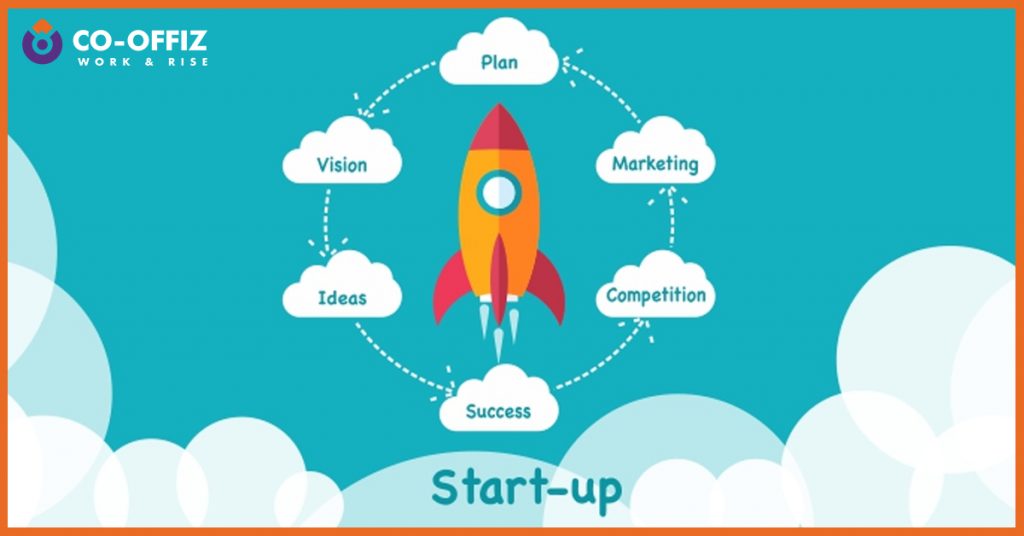14 Strategies To Help Your Startup Survive Its First Year
The first year of a startup’s journey is a pivotal and challenging phase. It is a time filled with excitement, innovation, and uncertainty. For entrepreneurs, this initial period can make or break their dreams of creating a successful and sustainable business. In this article, we will explore 14 essential strategies that can significantly increase the likelihood of your startup not only surviving but thriving in its critical first year.
These strategies encompass various aspects, from market research and financial management to customer-centric approaches and resilience. By understanding and implementing these strategies, you can position your startup for long-term success in an ever-changing business landscape. Let’s dive into these essential tactics to help your startup weather the storm and emerge stronger in its early stages.
14 Essential Strategies to Ensure Your Startup’s Success in Its First Year
1. Clear Vision and Mission: Lay the Foundation for Your Startup’s Success
A clear vision and mission are the guiding principles that set the direction and purpose for your startup’s success. They define your long-term goals, values, and the problem you aim to solve. Communicate them effectively to align your team and stakeholders, ensuring everyone is focused and committed to achieving your startup’s objectives. Regularly review and refine them as your business evolves. A strong vision and mission are essential for surviving the critical first year and beyond.
2. Thorough Market Research
Thorough market research is crucial for the survival of your startup in its first year. It involves gathering and analyzing information about your target market, industry trends, competitors, and customer needs. This research helps you understand the demand for your product or service, identify potential customers, and determine the competitive landscape.
By conducting in-depth market research, you can uncover valuable insights that will inform your business strategy and decision-making. It allows you to identify opportunities and gaps in the market, tailor your offerings to meet customer needs, and position your startup for success. Market research is an ongoing process that helps you stay ahead of changing market conditions and make informed choices to survive and thrive in your startup’s critical initial phase.
3. Build a Strong Team
Building a strong team is a fundamental aspect of ensuring your startup’s survival in its first year. A cohesive and talented team can effectively execute your vision, overcome challenges, and drive the business forward.
4. Agile Business Model
The Agile business model is an approach that emphasizes flexibility, adaptability, and responsiveness to changing market conditions. It involves iterative and incremental development, allowing businesses to quickly adjust their strategies and products based on customer feedback and market trends.
5. Financial Management
Financial management involves planning, organizing, and controlling a company’s financial resources to achieve its goals. It includes budgeting, financial reporting, cash flow management, risk assessment, investment decisions, cost control, financing, tax planning, financial analysis, and compliance. Effective financial management is essential for a startup’s survival, growth, and success.
6. Customer-Centric Approach
A customer-centric approach means placing the customer at the center of all business decisions and strategies. It involves understanding customer needs, preferences, and pain points to create products or services that meet their demands. By focusing on delivering exceptional customer experiences and building strong relationships, startups can gain customer loyalty, improve retention, and drive business growth.
7. Test and Iterate
Test and iterate is an essential process in which startups continuously test their products, services, or marketing strategies and make iterative improvements based on feedback and data analysis. By adopting this approach, startups can identify what works and what doesn’t, refine their offerings, and ensure they meet customer expectations. It allows for a more agile and adaptive approach, leading to better results and increased chances of success in the long run.
8. Scalable Technology Infrastructure
Scalable technology infrastructure refers to setting up a flexible and adaptable system that can handle growing demands as a startup expands. It involves using technologies and platforms that can easily accommodate increased users, data, and transactions without compromising performance or stability.
By having a scalable technology infrastructure, startups can avoid disruptions, reduce downtime, and efficiently scale their operations to meet future needs. This enables them to focus on growth without being limited by technological constraints.
9. Marketing and Branding
Marketing and branding are essential for startups to establish their presence in the market and attract customers.
Marketing involves promoting products or services through various channels to reach the target audience. Startups should use digital marketing, social media, content marketing, and other strategies to create brand awareness and generate leads.
Branding focuses on creating a unique and memorable identity for the startup. This includes designing a logo, defining brand values, and crafting a compelling brand story that resonates with customers.
Together, effective marketing and branding strategies help startups build a loyal customer base, increase sales, and differentiate themselves from competitors in the market.
10. Lean Operations
Lean Operations is a systematic approach to streamline processes, eliminate waste, and improve efficiency in a business. It focuses on continuous improvement, minimizing inventory, empowering employees, and delivering value to customers.
11. Strong Network
Having a strong network is crucial for the success of a startup. It involves building and maintaining relationships with various individuals and organizations that can provide support, guidance, resources, and opportunities. This network can include mentors, investors, potential customers, industry peers, suppliers, and other entrepreneurs. A strong network can open doors to new partnerships, collaborations, and valuable insights, helping the startup grow and overcome challenges.
12. Regulatory Compliance
Regulatory compliance refers to the adherence of a startup to the laws, regulations, and industry standards that govern its operations. This includes complying with local, state, and federal laws, as well as any industry-specific regulations that may apply to the startup’s products or services.
Ensuring regulatory compliance is essential to avoid legal issues, penalties, and reputational damage. It also helps build trust with customers, investors, and stakeholders, as they can be confident that the startup operates ethically and responsibly within the boundaries of the law.
13. Customer Acquisition and Retention
Customer acquisition and retention are critical aspects of growing a startup successfully.
- Customer Acquisition: This involves attracting new customers to your product or service. To do this effectively, startups need to identify their target audience, understand their needs and pain points, and create marketing strategies to reach and engage potential customers. Utilizing various marketing channels, such as social media, content marketing, paid advertising, and search engine optimization, can help attract a steady flow of new customers.
- Customer Retention: Retaining existing customers is equally important as acquiring new ones. Loyal customers not only bring repeat business but can also become brand advocates, promoting the startup to others. Providing exceptional customer service, personalized experiences, and addressing customer feedback are essential in retaining customers. Implementing loyalty programs and offering incentives can also encourage customers to continue their association with the startup.
By striking the right balance between customer acquisition and retention, startups can create a sustainable customer base and foster long-term growth. Happy and loyal customers can contribute significantly to the startup’s success and reputation in the market.
14. Stay Resilient
Entrepreneurship is a rollercoaster ride. Stay positive, adaptable, and resilient in the face of setbacks. Learn from failures and keep moving forward.
Conclusion
Surviving the critical first year of a startup requires a combination of strategic planning, adaptability, and a customer-centric approach. By establishing a clear vision and mission, conducting thorough market research, building a strong and agile team, implementing effective financial management, and fostering a customer-centric approach, startups can position themselves for growth and success. Additionally, leveraging scalable technology, implementing lean operations, investing in marketing and branding efforts, building a strong network, ensuring regulatory compliance, and focusing on customer acquisition and retention are vital components for sustained growth.
It’s important to remember that the startup journey will undoubtedly involve challenges and setbacks. However, by staying resilient and embracing the test-and-iterate approach, entrepreneurs can learn from their experiences and pivot when necessary. By combining these 14 strategies, startups can increase their chances of not only surviving their first year but also thriving in the competitive business landscape. With dedication, perseverance, and continuous improvement, startups can lay a solid foundation for a promising and successful future.



